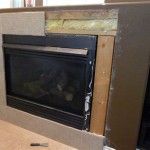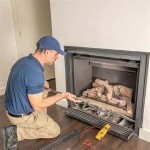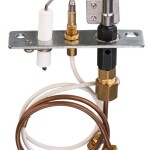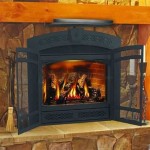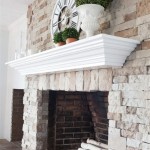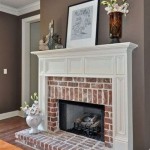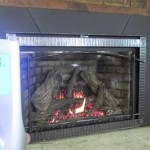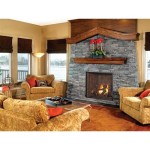Gas Fireplace Smells Like Kerosene: Understanding the Issue and Solutions
A gas fireplace, designed to provide warmth and ambiance, should ideally operate with a clean and odorless flame. Experiencing a kerosene-like smell emanating from the unit, however, signals a potential problem that warrants immediate attention. Identifying the source of the odor and implementing appropriate corrective measures are crucial for ensuring safe and efficient operation.
The presence of a kerosene-like odor from a gas fireplace is not normal and should not be ignored. This smell often indicates incomplete combustion or the presence of contaminants within the gas line or the fireplace itself. Further investigation is necessary to pinpoint the exact cause and prevent potential hazards.
Possible Causes of the Kerosene-Like Smell
Several factors can contribute to a kerosene-like odor originating from a gas fireplace. Understanding these potential causes is the first step towards effective troubleshooting and resolution. The investigation should encompass various components of the fireplace system, from the gas supply line to the burner assembly and venting system.
Incomplete Combustion: This is one of the primary reasons for unusual odors from gas appliances. Incomplete combustion occurs when the gas does not burn completely, resulting in the production of various byproducts, including unburnt hydrocarbons that can smell like kerosene or fuel oil. Several factors can contribute to incomplete combustion, including insufficient air supply, improper gas pressure, and dirty or malfunctioning burner components.
Contaminated Gas Supply: Although natural gas and propane are generally clean-burning fuels, contamination can occur at various points in the distribution system. The presence of foreign substances in the gas supply, such as condensation, oil residues, or other hydrocarbons, can alter the gas's burning characteristics and result in unusual odors. This is relatively rare, but possible, especially in areas with older gas infrastructures.
Malfunctioning Burner Assembly: The burner assembly is responsible for mixing gas and air in the correct proportions to ensure efficient combustion. If the burner ports are clogged with dust, debris, or rust, it can disrupt the gas flow and lead to incomplete combustion. Similarly, a damaged or corroded burner assembly can also impair the proper mixing of gas and air.
Improper Venting: A properly functioning venting system is crucial for safely exhausting combustion byproducts outside the home. If the vent is blocked, damaged, or improperly installed, it can cause combustion gases to back up into the living space, accompanied by a noticeable odor. Blockages can be caused by bird nests, debris accumulation, or structural damage to the vent pipe.
Newly Installed Fireplace: A kerosene-like smell can sometimes be observed during the initial operation of a new gas fireplace. This is often due to the burning off of manufacturing oils and residues used during the production process. This smell should dissipate after a few hours of operation. However, if the odor persists beyond the initial burn-in period, further investigation is necessary.
Gas Leaks: While a gas leak is more likely to smell like sulfur or rotten eggs (due to an added odorant called mercaptan), a small, slow leak might present a different, less easily identifiable odor in some circumstances. Even small gas leaks pose a significant safety risk and require immediate attention.
Troubleshooting and Diagnostic Steps
When a kerosene-like smell is detected, a systematic approach to troubleshooting is necessary to identify the root cause. This involves visual inspections, operational tests, and potentially, professional assistance.
Visual Inspection: Begin by visually inspecting the fireplace and its surrounding area. Look for any signs of damage, corrosion, or debris accumulation. Check the vent pipe for any visible obstructions or damage. Examine the burner assembly for any signs of clogging or deterioration. Also, inspect the gas supply line for any signs of leaks or damage.
Check Air Supply: Ensure that the air vents or openings around the fireplace are not blocked. Adequate air supply is crucial for complete combustion. Remove any obstructions that may be restricting airflow. Inadequate air supply is a common reason for incomplete combustion and associated odors.
Clean the Burner Assembly: If the burner assembly appears dirty or clogged, carefully clean it using a soft brush or vacuum cleaner. Remove any dust, debris, or rust that may be obstructing the burner ports. Consult the manufacturer's instructions for specific cleaning recommendations.
Observe the Flame: Carefully observe the flame pattern. A healthy flame should be blue with minimal yellow or orange tips. A yellow or orange flame often indicates incomplete combustion. If the flame is uneven, flickering excessively, or unusually colored, it suggests a problem with the gas-air mixture.
Check Gas Pressure: Inconsistent or low gas pressure can also contribute to incomplete combustion. This requires specialized tools and knowledge, making it best left to a qualified technician. They can accurately measure the gas pressure and adjust it if necessary.
Ventilation Check: Ensure that the flue damper is fully open during operation. A partially closed damper can restrict the exhaust of combustion gases and lead to a buildup of odors inside the home. Also, confirm that the venting system is properly connected and sealed.
Leak Detection: Although the primary odorant in natural gas is typically sulfurous, it is crucial to rule out any potential gas leaks. Apply a soapy water solution to gas connections and fittings. If bubbles appear, it indicates a gas leak. Immediately shut off the gas supply and contact a qualified technician to repair the leak.
Remedial Actions and Preventative Maintenance
Once the source of the kerosene-like odor has been identified, appropriate remedial actions must be taken to address the problem. Regular preventative maintenance can also help prevent future occurrences.
Professional Cleaning and Servicing: If the problem persists despite initial troubleshooting efforts, it is recommended to contact a qualified gas fireplace technician for professional cleaning and servicing. A technician can thoroughly inspect the entire fireplace system, identify any underlying issues, and perform necessary repairs or adjustments.
Burner Assembly Replacement: If the burner assembly is severely damaged or corroded, it may need to be replaced. A new burner assembly will ensure proper gas-air mixing and more efficient combustion.
Venting System Repair or Replacement: If the venting system is damaged or improperly installed, it should be repaired or replaced immediately. This will ensure the safe and efficient exhaust of combustion gases outside the home.
Gas Line Inspection and Repair: If a gas leak is detected, the gas line must be inspected and repaired by a qualified technician. Gas leaks pose a serious safety hazard and should be addressed immediately.
Regular Maintenance: Regular preventative maintenance is crucial for ensuring the safe and efficient operation of a gas fireplace. This includes annual inspections, cleaning of the burner assembly, and checking the venting system for any obstructions or damage.
Professional Inspection: Schedule annual inspections by a qualified gas fireplace technician. They can identify potential problems before they escalate and perform necessary maintenance to ensure optimal performance.
Clean the Fireplace Regularly: Regularly clean the area around the fireplace to prevent dust and debris from accumulating. Ensure that the air vents are clear of obstructions. A clean environment promotes better airflow and reduces the risk of incomplete combustion.
Follow Manufacturer's Instructions: Always follow the manufacturer's instructions for operating and maintaining the gas fireplace. This will help ensure safe and efficient operation and prevent potential problems.
Ignoring a kerosene-like smell emanating from a gas fireplace can potentially lead to dangerous situations, including carbon monoxide poisoning or gas leaks. Prompt investigation and appropriate corrective measures are essential for ensuring the safety and well-being of occupants. Remember, when in doubt, consult a qualified professional.

Why Does My Gas Fireplace Smell Like Kerosene Hunker

Vent Free Fireplace Odor

Why Does My Gas Fireplace Smell Dreifuss Fireplaces

Why Does My Gas Fireplace Smell Dreifuss Fireplaces

Why Does My Gas Fireplace Smell Dreifuss Fireplaces

Vent Free Fireplace Odor

Why Does My Gas Fireplace Smell Dreifuss Fireplaces

Why Do Ventless Gas Logs Emit Odors The Chemistry Behind It Embers Custom Fireplace S

Why Do Ventless Gas Logs Emit Odors The Chemistry Behind It Embers Custom Fireplace S

How To Prevent Vent Free Fireplace Odor Hunker
Related Posts

